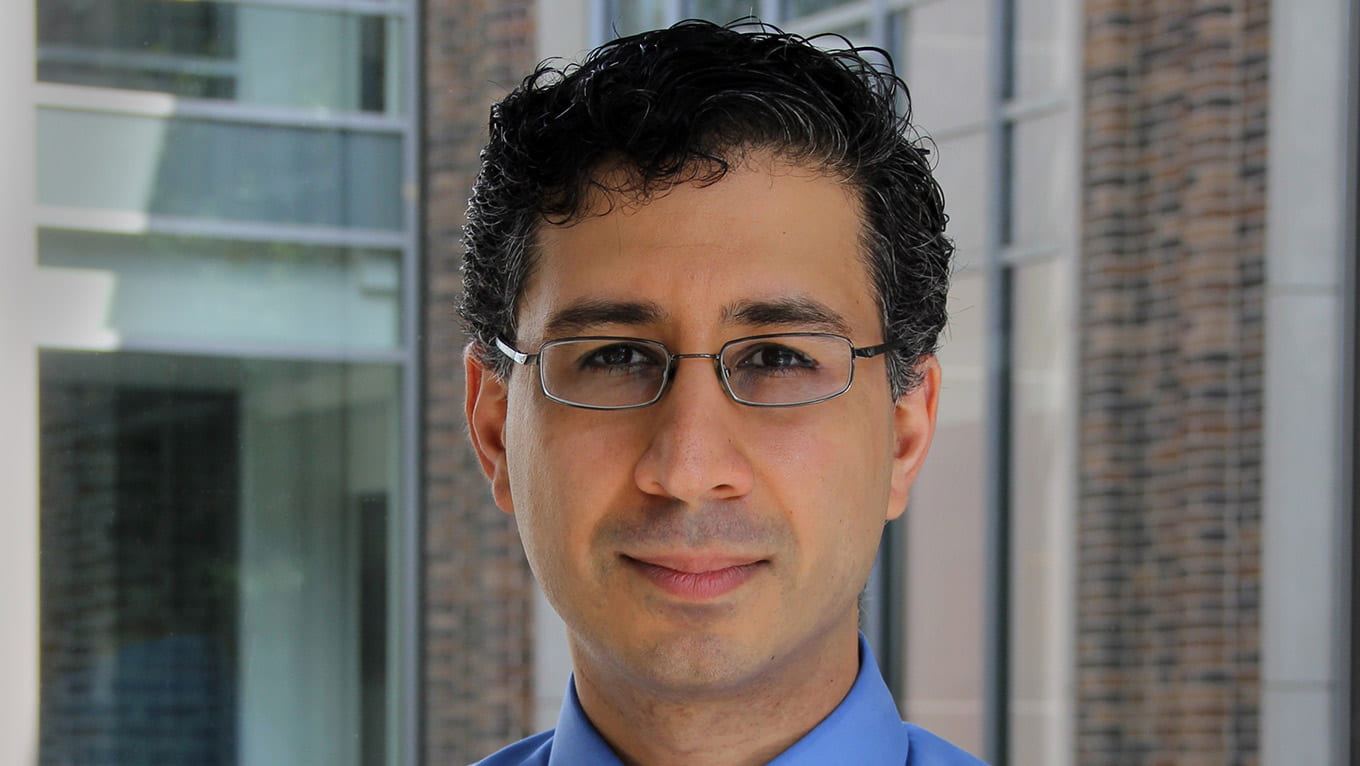Sina Farsiu is the very epitome of an interdisciplinary scientist. Although his Ph.D. from the Baskin School of Engineering at UC Santa Cruz is in electrical engineering, he is currently serving as the Paul Ruffin Scarborough Associate Professor of Biomedical Engineering and Associate Professor of Ophthalmology at Duke University, and he also holds secondary appointments in both electrical and computer engineering and computer science. In his Vision and Image Processing Lab, he is combining all four of these fields to create technology clinicians can use to more readily diagnose, and therefore treat eye disease.
“The research I do is very rewarding because I work in the field of medicine and the result of our research is being used in clinics for saving the eyesight of very young children or older adults,” Farsiu says. “Although all of my students are engineers, they are in constant collaboration with my clinician colleagues. They go to the hospital, talk with the doctors, show them the technology they have developed, get feedback, and come back and develop new systems.”
We talk about how good diversity is in employment and stock market picks, and it is also good to be diversified in the type of research you do.
Farsiu’s lab has two main components, creating both hardware and software for imaging devices. On the hardware side, they develop advanced photonic imaging systems to capture very high resolution images of the eyes of adults, and also special systems for the eyes of young children.
“You cannot use the imaging system developed for adults on [neonates], so we develop specific systems that are very light, very small and portable,” Farsiu explains.
Farsiu’s devices provide clinicians with a more thorough and detailed look at patients’ eyes, but in doing so, they create what he describes as an “avalanche of data” that is nearly impossible for clinicians to sort through on their own. To combat this problem, Farsiu has a separate lab, in a different facility from his hardware lab, that focuses specifically on creating software systems to process the data collected by both for their own devices and more traditional imaging devices.
“We have an artificial intelligence system that we have developed that goes and finds early signs of the disease, or finds the factors in a particular subject’s eyes that would respond better to one type of therapy over another,” Farsiu says.
Studying super-resolution at Baskin Engineering
Much of what Farsiu does now in image processing could be seen as having its origins in the work he did as a graduate student under Peyman Milanfar, a former Baskin Engineering professor who now works at Google. “Our work [at UCSC] was not at all clinically focused, it was general mathematical models, but that mathematics and development of image processing helped me to get a job in a biomedicine lab,” Farsiu explains.
Farsiu wrote his doctoral thesis on a technology called “super-resolution,” which uses mathematical or software models to enhance the quality of images of a camera without changing its hardware. Farsiu published a very influential and highly cited paper on the technology, which later became the technological basis of an image enhancement feature in Google Pixel cameras.
After graduating from UCSC, Farsiu decided to stay on campus for another year as a postdoc, but rather than continuing on the same line of research, he focused on photonic imaging systems. He believes that having this more hardware-focused background in his arsenal has helped him to run a lab in which they build imagining devices.
Farsiu confesses that academic life can be grueling (“I thought it was an easy life- I was wrong,” he jokes), but he has very fond memories of being a student on the UC Santa Cruz campus.
“I would bike from downtown Santa Cruz to the lab most of the days, and when I was biking up I would look down the hill, and on the left side was forest, and on the right side I could see the city and the ocean, and I just thought it was the most beautiful scene in the world and that I was the luckiest man for getting to see this road every day,” he says.
Advice for students pursuing academia
Now that he is a professor, Farsiu enjoys having the opportunity to teach and mentor Ph.D. students himself. He says of his graduate students, “We make this five-year bond- I see them coming to the lab not knowing how to do research in this field, and almost all of them when they graduate they know more than me, so it is just so exciting to see the process and how they grow.”
Farsiu says that he appreciates the freedom that being an academic has afforded him. “Academia is one of the best places to do research, and the research that I want to do rather than the research that is dictated by someone else, so that was a big deal,” he says.
Farsiu acknowledges that establishing yourself in academia is difficult, but that being at a university also provides one of the best opportunities to do research that isn’t dictated by a corporate agenda. For students who are looking to capture this opportunity for themselves, he advises that they engage in the type of interdisciplinary research that he believes has made him so successful.
“Don’t put all of your eggs in one basket, focusing only on one small field or collaborating only with one person,” he says. “We talk about how good diversity is in employment and stock market picks, and it is also good to be diversified in the type of research you do. It is hard to predict what will be the area of research of interest five years from now, but if you have worked on a bunch of different topics of research, not only will you be able to lean on one topic versus another when the time comes, but you will also be able to combine them to become a multidisciplinary scientist.”




